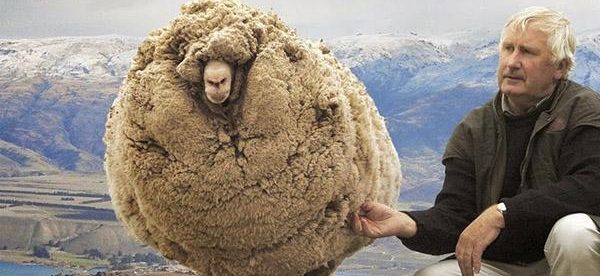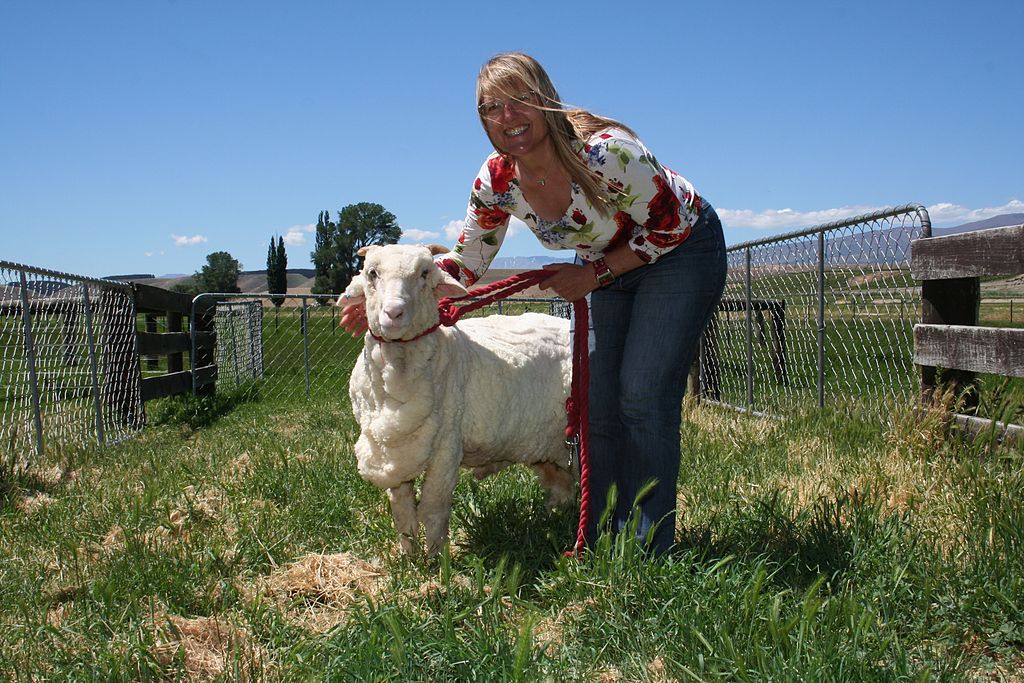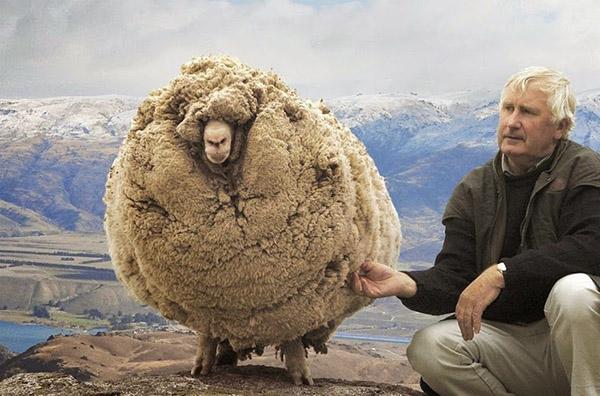Shear Determination


Pictured above is a newly shorn Merino sheep, the breed that is most common among domesticated sheep. As a general rule, commercially-raised sheep like the one above get sheared about once a year. It’s a quick process; a professional sheep shearer can shear sheep in only two or three minutes, netting about 11 pounds (or about 5 kg) of wool, at least if you’re talking about the typical Merino sheep. It’s typically a humane, painless endeavor for the sheep, akin to a human getting a haircut. And much like human hair, if it doesn’t get cut, the wool from domesticated sheep breeds usually just keeps growing.
Which is, basically, how this (via) happened.

In 1998, the Merino sheep above — since named Shrek — was housed at Bendigo Station, a shearing facility in New Zealand. But Shrek wasn’t like the other sheep. Instead of going for his annual shearing, Shrek ran away, repeatedly avoiding capture. And then, he effectively disappeared. As one sheep in a large flock, he wasn’t worth chasing forever, so the Bendigo Station just kind of gave up on him. As a result, he didn’t get his annual haircut — and the wool just kept on growing and growing.
For six years.
In 2004, the Bendigo Station team finally found Shrek, living in a nearby cave. At first, it wasn’t clear that the creature they discovered was a sheep at all; the owner of the facility told the BBC that “when [Shrek] was finally spotted they did not immediately recognize him as a sheep.” (You can see why; he looks more like a dirty snowball than anything else.)
The absurdity of Shrek’s appearance made international headlines, bringing the sheep its 15 minutes of fame. And that opened an opportunity for Shrek’s hijinks to yield some good results. Again per the BBC, Shrek “went under the shearer’s blade during a live half-hour news program on TV New Zealand” and his wool was auctioned off to raise money for children’s medical charities. There was a lot of wool, too, as seen below via Modern Farmer. But to quantify it for you, the wool weighed in at an absurd 60 pounds (27 kg), enough to produce the equivalent of 20 wool suits. And it’s likely that the wool helped him survive — it provided a suit of armor so thick that Shrek was effectively immune from the teeth of predators.

Shrek, sadly, is no longer with us. He lived out the rest of his days at Bendigo Station, getting somewhat regular shearings with most of the flock. In 2011, on veterinary advice, he was put to sleep one final time.
Thankfully, we do have some pictures of Shrek minus his six years of wool. If you want to see one, you don’t have to go very far — the sheep pictured at the top of the page is of Shrek, shortly after his 2008 shearing, via Wikipedia.
Bonus fact: Shrek’s adventures in the New Zealand wilderness were fun and perhaps record-setting, but the “most wool from a single sheep” record has been surpassed since — by a lot. In 2015, another sheep — this one since named Chris — was discovered after being lost for six years. (Chris, though, got lost in Australia.) As The Star reported, Chris’s subsequent shearing yielded nearly 90 pounds (40 kg) of wool — which was a lot, especially given that a freshly-sheared Chris weighed only 97 pounds (44 kg).
From the Archives: From Sheep to Books: Why paper sizes are the sizes they are.
